This Greek pocketless pita bread is so simple to make and so flavourful, that you’ll never go back to the store bought ones!

These past months have been tough on everyone. We had to limit our time outside drastically and had to mandatory self isolate in our houses. In my opinion this affected significantly what we eat and how we prepare our food. Before we we could easily go to the store or to a restaurant if we wanted something specific to eat and at the same time we didn’t know how to make it.

The lockdown however changed a lot of things: people had limited access to restaurants and supermarkets, had limited access to supplies since many people were hoarding on supplies, leaving others empty handed, and many people found themselves with more time on their hands. Hence, for many, cooking became an escape, and people started experimenting with food they would never have dared to try before. For me, one of the foods which I improved making during these months, were these greek pocketless pita bread.
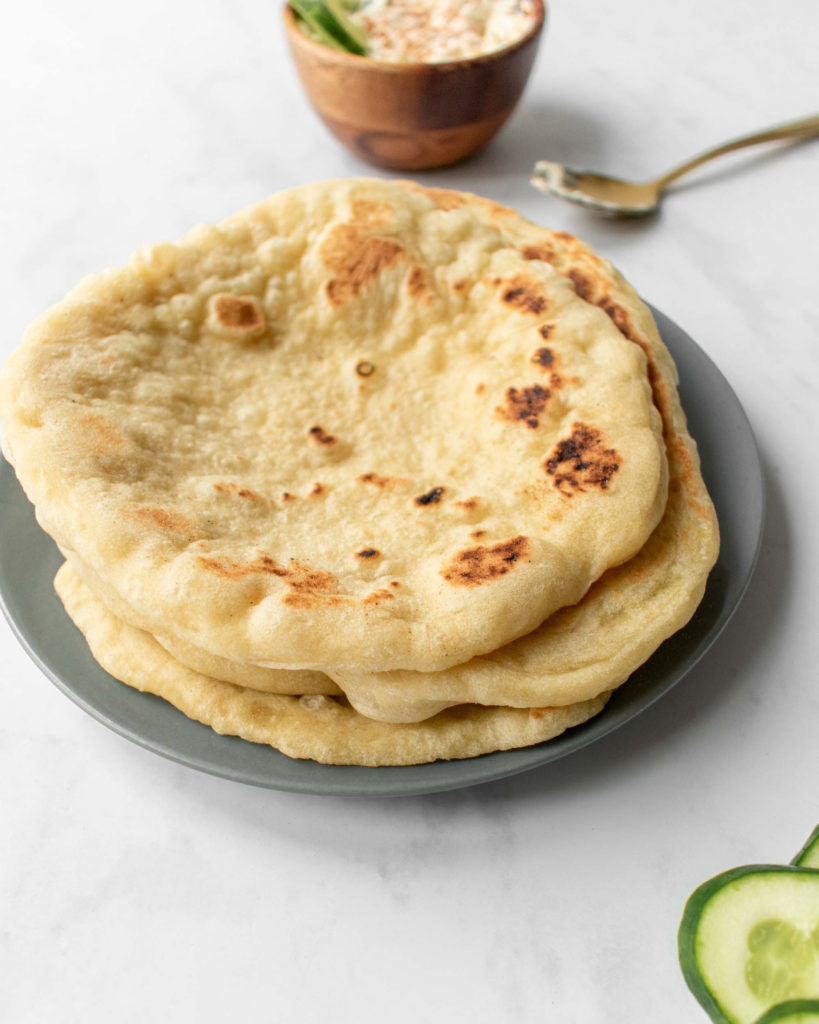
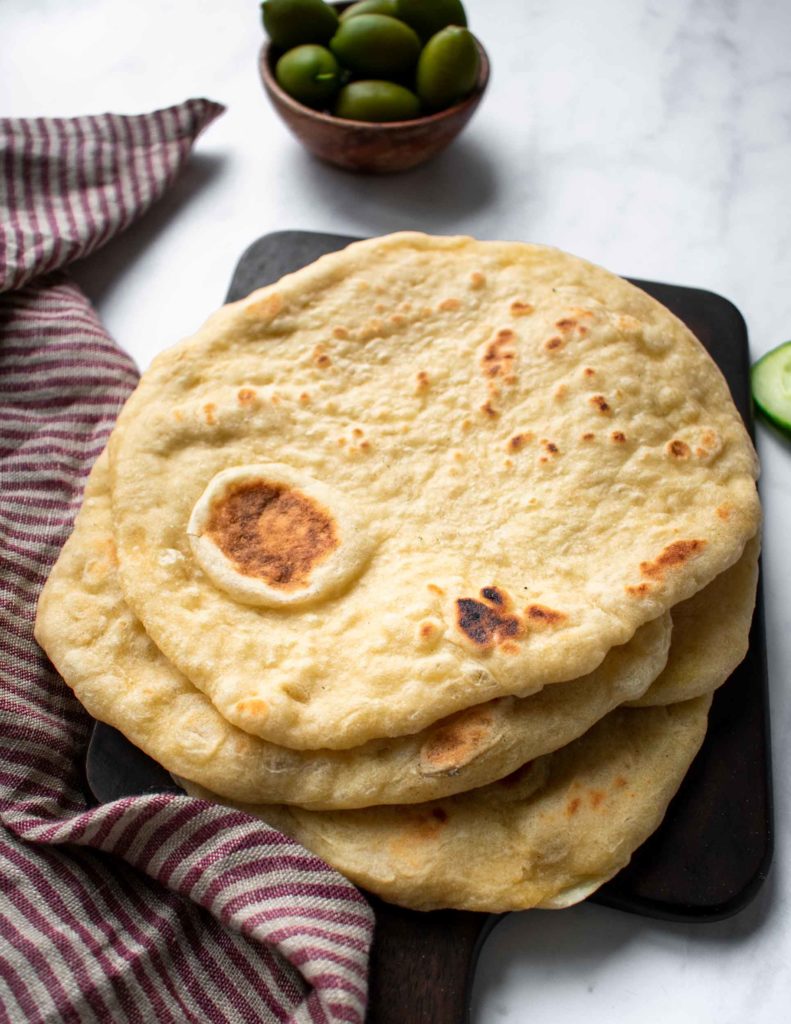
What is exactly Greek Pita Bread?
Most commonly, when people talk about pita bread they are referring to the pita bread which is hollow from the inside and you get to fill with tasty meat and vegetables, popular in Middle Eastern cuisines. However, there is another type of pita; the pocketless pita, which is also known as the Greek Pita. This pocketless pita, instead of being cooked in the oven like the pocket pita, is cooked on the stove in a hot cast iron or pan, and you get to top it up with your favourite food.

What to eat the Greek Pita with?
Greek pita can be eaten as a side with any meal! It goes great with appetisers, especially with tzatziki or fava; or cut into triangles instead of croutons in a salad. Another popular way is to top it up with roasted meats and some vegetables for a typical street food; gyros! You can also take it a step further and make delicious sweet or savoury pita chips. Recently, I’ve been experimenting a lot with this and will share some of my favourite pita chips soon.

Greek Pocketless Pita Bread
Ingredients
- 450 g 00 flour/bread flour
- 250 ml water lukewarm
- 2 tbsp olive oil
- 1 tsp active dry yeast 4 g
- 3/4 tbsp sugar 12 g
- 3/4 tbsp salt 15 g
Instructions
- In a large bowl add the lukewarm water, sugar and yeast. Let the yeast activate for about 15 minutes until foamy.
- To the yeast add half of the flour and mix together. It should look like batter.
- Add the salt and olive oil to the mixture and combine.
- Start adding slowly the remaining flour until a dough is formed. Knead for about 10 minutes until you get a smooth dough.
- Place the dough in a well oiled bowl and cover with a damp towel. Let rise for 1 hour in a warm place in your kitchen. Until it doubles in size.
- Once the dough has risen, punch it down and divide the dough into 8 equal pieces.
- Form the divided dough into balls and place on a floured sheet pan, cover and let rest for another hour.
- Heat a cast iron, skillet or a non-stick pan and slightly drizzle some oil on the surface.
- Start flattening the dough balls one at a time, leaving the others covered so that they don't dry. The dough is soft so it can be opened by hand in a flat circle, however you can also open the dough on a floured surface with a rolling pin.
- Place the pita dough on the hot cast iron and cook for about 1 minute, turn and continue cook on the other side. This is a quick process so don't leave the stove while cooking the pita.
- Place the cooked pita on a towel covered plate and cover the pitas with another towel so that they keep warm and don't dry.
- Repeat the process until all the pitas are cooked.
Notes
If you have any questions, feedback or comments on this recipe, please leave a comment below. Please also rate this recipe by double clicking on the stars below. If you did make this recipe, tag @apronandwhisk and hashtag #apronandwhisk, as I’m curious to see what you create!
Don’t forget to subscribe to the mailing list down below so to receive the recipe updates straight to your mailbox!

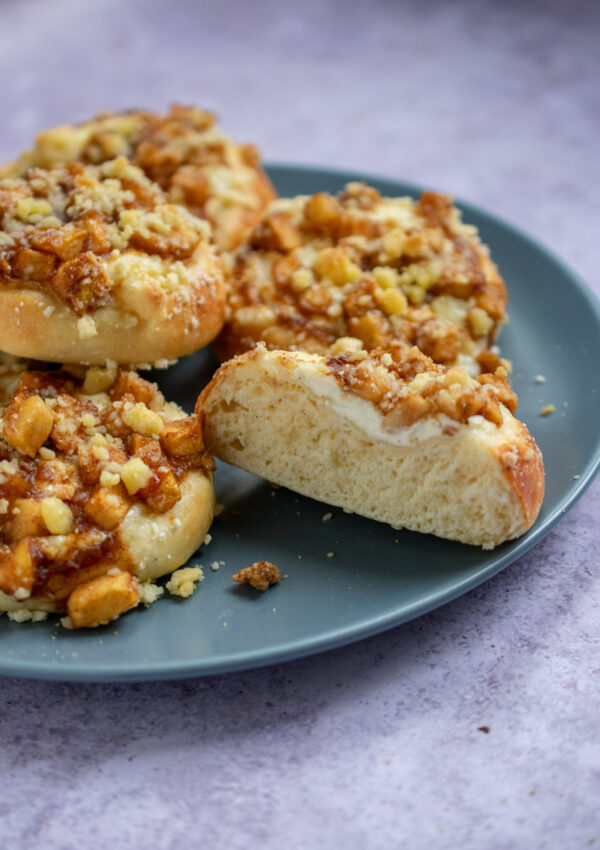

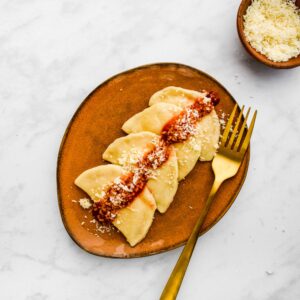



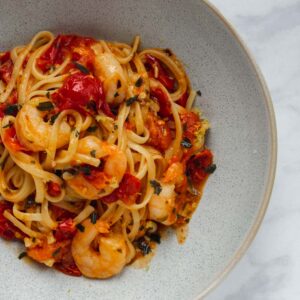



Can you make these with a ratio of whole wheat flour? If so, how much would you substitute for the bread flour?
I have only tried once making them with whole wheat flour, the end result was similar, just that the whole wheat flour made them a bit denser. I recommend only substituting 1/3 of the bread flour. Therefore, you can use 300g bread flour and 120g whole wheat flour. However, for a better result, increase also the amount of yeast to 7g and add more water, about 20ml. I would only start adding the water gradually, to see how the flours absorb the water, as you might need less water.
Thank you!
The flatbread turned out wonderful. The bread was so soft and delicious. I will definitely be reusing this recipe.
That’s so wonderful to hear! 🙂 Thank you!